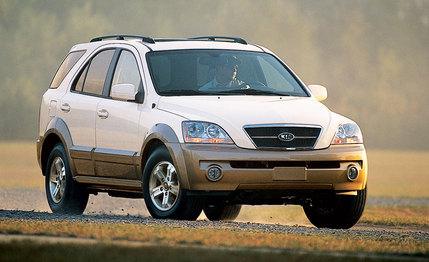
 Road Test
Road Test
If you live within reach of a broadcast TV signal, your set probably pulls in at least a couple of cheesy furniture-store ads per sitting. "Don't miss our semi-weekly 84-HOUR SALE! These KRAZY prices KAN'T be BEAT!" Your subconscious probably blocks out this yelling as it would a midnight freight train. Just as well. Their Naugahyde, foam-rubber, and chipboard sofas would be worthless at almost any price. But what if one of those fluorescent-lit fire-sale emporia really did manage to hijack a truckload of North Carolina hardwood and glove-leather couches? How would they lure you in?
Kia finds itself in a similar fix. No, the Korean upstart hasn't hosed down the airwaves with loud, annoying commercials, but for eight years, the advertising that has run, plus all the editorial coverage and street buzz about Kia, has generally zeroed in on the bottom line — "It has just as many doors, tires, and cylinders as a Civic for thousands less!" That's because until recently, there wasn't too much to crow about beneath those dimes-on-the-dollar sticker prices and 10-year warranties. Frankly, the vehicles were about as heavy, unrefined, and technologically backward as one might expect from a country in which driving and the dream of personal-car ownership only became a reality during our Reagan era.
But learning curves are steep in a computer-connected world, and the quality and technology gaps shrink with each new vehicle launched by the now merged Hyundai/Kia conglomerate. The newest, this Sorento, could change the buzz about Kia.
To begin with, it's a clean-sheet design targeted at the mid-size-SUV market, with the Jeep Grand Cherokee, Nissan Pathfinder, and Toyota Highlander listed as primary targets. Dimensionally, the Sorento trades two to five inches in length for one to four inches in width relative to those trucks. As a result, passenger space, especially for three abreast in the rear seat, is better than average for the class, but the maximum cargo capacity of 66 cubic feet makes it one of the smallest in the class (blame the RX300-ish bobbed tail). No third-row seat is offered.
The Sorento's three main rivals employ unibody construction, but Kia follows the GM and Ford approach and mounts the body to a rigid frame of fully boxed section side rails and nine crossmembers. The suspension has independent control arms in front and a coil-spring, five-link live axle in back. And as evidence of progress in the weight-loss department at Kia, this four-wheel-drive Sorento weighs 4538 pounds, 324 less than our last front-drive Sedona EX minivan and just slightly more than its competitors.
In the off-roading department, Kia targets Jeep, not the soft-roaders. Four-wheel-drive models boast a proper low-range transfer case, a standard Eaton limited-slip rear diff, skid plates, tow hooks, a full-size spare, and 8.2 inches of ground clearance. Two transfer cases are offered. Standard Sorentos in LX or EX trim get an electronically selected part-time unit with a fuel-saving rear-drive setting that disconnects the front half-shafts via vacuum-actuated dog clutches inside the front differential. EX four-wheel-drive models equipped with the $1800 Luxury package (leather, automatic A/C, a six-disc CD changer, and more) get a BorgWarner Torque-on-Demand all-wheel-drive system that sends 100 percent of the torque to the rear until computers sense or predict slippage and then an electromagnetic clutch engages the front axle, splitting torque 50/50.